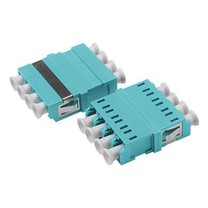
In the context of MPO (Multi-Fiber Push-On) connectors, the terms "male" and "female" refer to the gender or alignment of the connector pins. Here's the difference between male and female MPO connectors:
Male MPO Connector: A male MPO connector has guide pins or alignment pins on the connector body. These pins are designed to fit into the corresponding holes or slots on a female MPO connector. Male MPO connectors typically have flat or concave polished ferrules that house the fiber ends. They are responsible for accurately aligning and mating with female MPO connectors.
Female MPO Connector: A female MPO connector has guide holes or alignment holes on the connector body. These holes are intended to receive the guide pins of a male MPO connector, providing precise alignment during connection. Female MPO connectors usually have convex or beveled polished ferrules that receive the male MPO connectors. The alignment holes ensure proper positioning and mating of the connector pins.
In a typical MPO connector configuration, male MPO connectors are often used on the patch cord or cable side, while female MPO connectors are used on the equipment or adapter side. The male connector is inserted into the female connector, ensuring accurate alignment and connection of the multiple fibers within the connectors.






